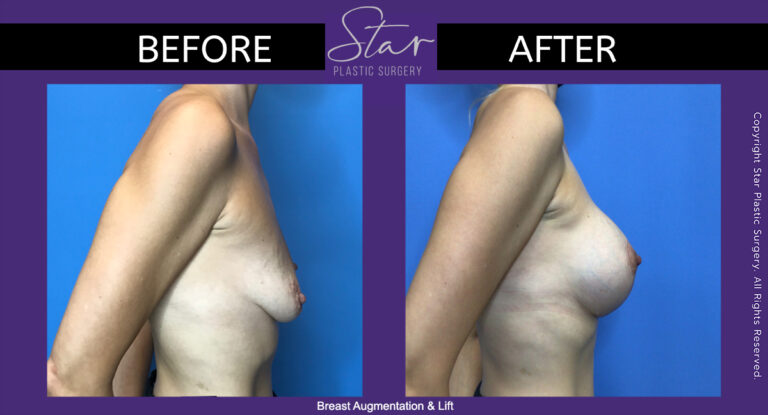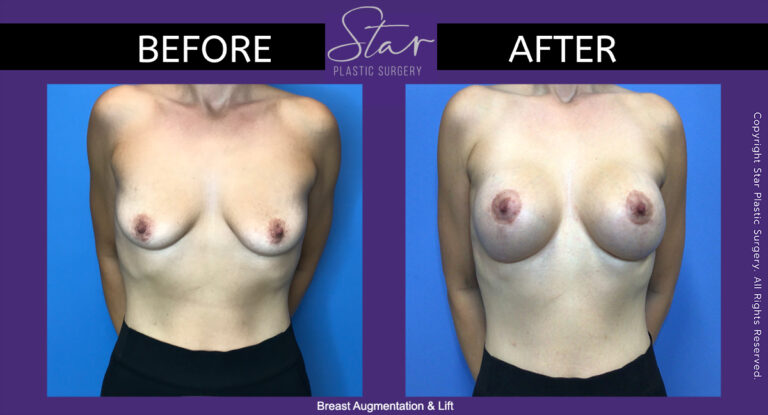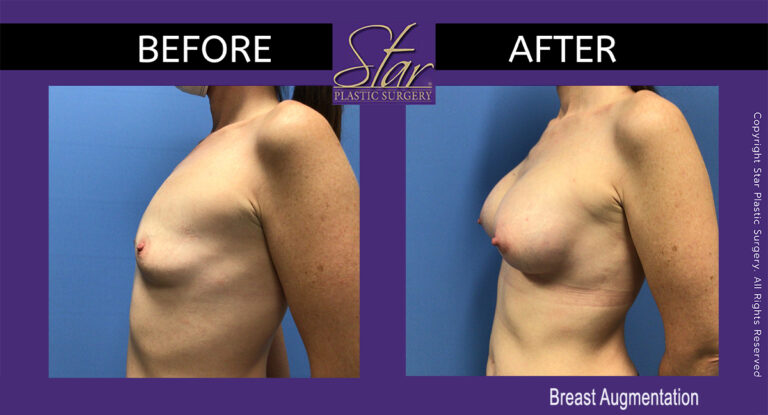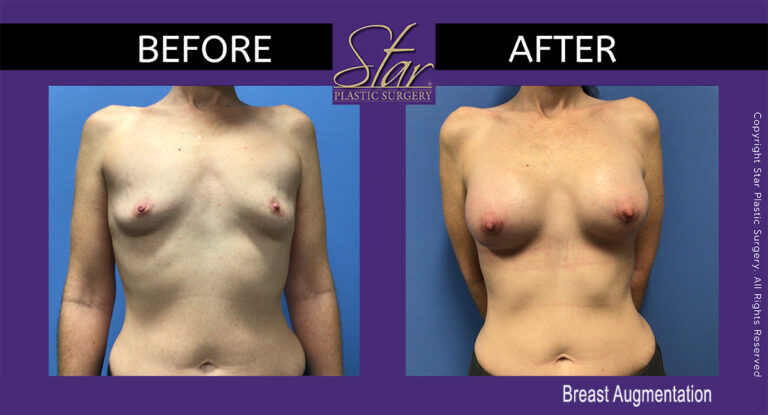Breast Augmentation Terminology Part 2 (L-Z)
Are you considering breast augmentation and want to do all your research first? If so, you may have read our first post on breast augmentation terminology.
So as not to overwhelm our readers, we only addressed the first half of the alphabet.
We’ll finish the job here with the second half of the alphabet so that you don’t need to scour the internet to find them.
Breast Augmentation Terminology (L-Z)
Just as we did in our first post, we won’t do a serious deep dive into the terminology. And just as some of the words in the first list didn’t apply to you, the same will apply here. But you can never have too much knowledge, right? So let’s take a look.
Mammary Hypoplasia
If one or both of your breasts are pointed, square, or oval in shape, your doctor may have diagnosed you with mammary hypoplasia. It’s a condition caused by breast malformation and typically occurs because the breast didn’t fully form during puberty. The areolar area may be constricted or collapsed, there may be a high breast fold, and/or the breast tissue tilts downward. Augmentation can repair this, but the constricted tissue will first need to be released.
Periareolar Incision
The area on the breast that includes the nipple and the surrounding pigmented skin is known as the nipple-areolar complex. A periareolar incision is one that’s made on the outside edge of this area. If you’re looking at a breast lift, the surgeon may use this to remove excess skin – though there are other applications.
Rupture
One of the reasons people may hesitate to have breast augmentation is the possibility of a breast implant rupture. This is a rare occurrence, however. It can happen at any point after the procedure and is often the result of surgical instruments, trauma, under- or overfilling breast implants, capsular contracture, or excessive compression. While there will always be a risk with any surgery, it’s very important to vet your surgeon and ensure that he or she is board-certified and highly qualified.
Subglandular or Subpectoral Implant Placement
Subglandular implant placement is known as over-the-muscle placement, while subpectoral implant placement is under-the-muscle placement. Subglandular has a shorter recovery time but may not look as natural on certain body types. Subpectoral has a slightly longer recovery time but offers improved support and a more natural look.
Symmastia
On extremely rare occasions, the breast implants may settle too close together after the augmentation procedure and there is little to no room between the breasts. This is known as symmastia and is usually the result of over-dissection of the pocket.
Textured Breast Implants
Textured breast implants are subjected to a texturizing process that creates a grained surface on the outer shell of the implant to help reduce the risk of malposition or flipping of the implant. Many surgeons no longer promote this since it appears to correlate with the development of Breast Implant-Associated Anaplastic Large Cell Lymphoma (BIA-ALCL).
Transaxillary Incision
A transaxillary incision is made in the armpit and the implant is placed using an endoscopic surgical camera. It reduces the appearance of scarring. It is not among the more common techniques and requires specific skill and experience.
Upper Pole Fullness
If you’re looking for breast augmentation because your breasts have somewhat fallen flat, then you’re looking for what’s called upper pole fullness. This term refers to the breast area’s shape, contour, and volume above the nipple. (Below the nipple is known as the lower pole.) Increasing upper pole fullness makes cleavage more prominent and gives the breast a rounder appearance. The size and profile of your chosen breast implant will determine how much upper pole fullness you’ll achieve.
Are You Considering Breast Augmentation Surgery?
Between this post and last week’s post, you now have more familiarity with breast augmentation terminology.
So if you’re thinking about getting breast augmentation, contact us today.
During your free consultation, you can ask the surgeon any further questions you have about the terminology as well as discuss the intricacies of the procedure. Then you can get that breast augmentation with confidence.
Breast Augmentation Terminology Part 1 (A-K)
When considering getting work done on your breasts, you’re bound to experience some amount of breast augmentation terminology that may be unfamiliar to you.
No worries. Rather than pouring through the internet to find their meanings, we’re breaking down some of the terminology here.
Because there is a wealth of terms, we’ve tackled the first half of the alphabet here and will address the second half in our next post.
Breast Augmentation Terminology (A-K)
We won’t get too deep in the weeds on the terminology so as not to overwhelm you. And some if not many of these terms won’t apply to you. But if you like to go in knowing all the details, here is a sampling of some of the terms you may hear.
Augmentation Mastopexy
Augmentation mastopexy is really just a ‘doctorly’ way of saying breast augmentation with a lift. This is often the recommended procedure for patients who are struggling with breast sagging because of weight loss, aging, or childbearing. It’s designed to lift drooping breast tissues while adding fullness especially in the upper breast.
Breast Capsule
Any time the human body experiences a foreign body, it responds by creating a protective capsule of collagen around it. The breast capsule is what forms around breast implants. It’s completely normal and a healthy part of the healing process. It also helps to keep the implants in place.
Cooper’s Ligaments
Within the breast there is connective tissue that provides support and structure. The Cooper’s ligaments run from the clavicle to the interior part of the pectoralis major muscle before branching throughout the breast tissue.
Drop and Fluff
“Drop and fluff” may sound like a laundry term, but it actually describes the way a breast implant settles after breast augmentation surgery. Immediately after surgery, breast implants sit high on the chest as the muscles in the chest tighten to adjust to their presence. As healing proceeds, the muscles relax and the implants drop to a more natural position. From there, they fluff, as it were to fill the lower breast cavity.
Gummy Bear Breast Implants
As silicone breast implants continue to improve, they’re becoming highly cohesive. Compared to their earlier silicone counterparts, they are firm yet flexible – like the consistency of a gummy bear. They also retain their natural look and feel even as they age.
Implant Rippling
Implant rippling is just like it sounds. Rippling of the implant becomes visible through the skin at the outer perimeter of the implant. This is usually along the outer edge toward the arm pit. It can occur with either saline or silicone implants, but is more prominent in round saline implants. It is also most common among women who are very thin or who have little natural breath tissue.
Keller Funnel
If you’re wondering how a Keller Funnel works, think about a piping bag as one would use in baking. In this case though, the breast implant is placed in the large end of a sterilized and hydrated bag, while the narrow end is inserted into the incision on the patient. The breast implant is then gently ‘piped’ into the surgical pocket.
Are You Considering Breast Augmentation Surgery?
Having awareness of breast augmentation terminology can give you more peace of mind as you consider surgery.
So if you’re thinking about getting breast augmentation, contact us today. During your free consultation, we’ll walk you through the process and answer any other questions you might have.
That way you’ll go in reassured and confident about the whole procedure.
Breast Augmentation and Lift 2023

Breast Augmentation and Lift

Breast Augmentation and Lift 2023
Breast Augmentation 2023
Breast Augmentation After Weight Loss
Have you recently undergone significant weight loss? If so, you may also be noticing a change or even loss in breast size.
If your reasons for weight loss are celebratory, this can be a bit of a downer. And if the weight loss was not welcome, it can be even more discouraging.
Fortunately, breast augmentation after weight loss is a common and highly effective procedure to bring brightness to your situation – whatever it might be.
Breast Augmentation After Weight Loss
The majority of breast augmentations, whether needed because of weight loss or simply by choice, are completed using implants. The two most common implants are silicone or saline.
Both silicone and saline implants are made from a silicone elastomer shell. The main difference is silicone implants are made fully of silicone and filled with a cohesive silicone gel, while saline implants have an outer shell that’s constructed of silicone and then later filled with saline.
Some people believe that silicone implants look and feel more natural. Plus, they come in a wide variety of shapes, sizes, and degrees of firmness so you know exactly what will be implanted.
Meanwhile, saline implants are inserted when empty and then filled with a sterile saline solution once in place. Some patients prefer the idea of saline solution versus silicone gel in their bodies. Yet, silicone gel more closely simulates breast tissue. So saline implants may end up feeling firmer than natural breast tissue.
The third option is fat transfer. In this case, a patient’s own fat is used to increase breast volume in a more natural way. After weight loss, though, this may not be an option. Ultimately, you can discuss your available options with your board-certified plastic surgeon.
What If You’ve Already Had Breast Augmentation?
If you’ve already had breast augmentation in the past, weight loss will likely affect the appearance of your breasts too. This amount of impact will depend on which sort of breast augmentation procedure and/or implant you have.
For patients who chose fat transfer, weight loss can noticeably affect the results of augmentation. Breast contour is created by fat and other tissue – the loss of which can change the overall appearance of the breast.
Meanwhile, implants are much less prone to significant impact from weight fluctuation. The implants will maintain their original shape and size. This is not to say, however, that there will be no impact. Despite the fact that the implants remain the same, the aforementioned fat and tissues that create the contour have decreased. The skin may now be stretched leaving the implants to sag.
In this case, the best course of action is a breast lift. This body contouring procedure won’t alter the volume of the breasts or breast implants. Instead, the objective here is to reshape the breasts to restore a more uplifted and youthful appearance.
Looking to Boost Your Breasts After Weight Loss?
There are many reasons for losing weight. But if you’re generally dissatisfied with the appearance of your breasts now that you have, don’t let it bring you down.
Lift your spirits with firmer and perkier breasts.
Contact us today to find out which sort of breast augmentation after weight loss is right for you.
Prepping for Breast Augmentation
With the wealth of plastic surgery-based “reality” television, a procedure such as a breast augmentation may not be taken as seriously as it should.
To call it a “boob job” with a laissez-faire attitude diminishes the importance of the procedure.
It’s important to remember that it’s surgery and prepping for breast augmentation should be taken seriously to get the best results.
Avoid These Mistakes When Prepping for Breast Augmentation
As with any surgery, there are certain actions you’ll need to take to prepare. But long before you go under the knife, you want to get all your ducks in a row.
So do the important footwork to avoid the following five mistakes:
- Considering Procedure for the Wrong Reasons
First things first, be completely truthful about why you want breast augmentation. If you’re embarrassed by breast asymmetry or underwent a mastectomy, you may find increased confidence and comfort by getting breast augmentation.
And certainly if you’re thoroughly dissatisfied with the appearance of your breasts and it’s affecting your self-esteem, then by all means, a breast augmentation can help.
If, however, you’re changing your body to please someone else, then you may well end up doubting or even regretting your decision. Undergoing a surgical procedure such as breast augmentation is a personal decision that should be yours alone.
- Skipping Necessary Research
Once you’ve determined you want a breast augmentation for all the right reasons, take a look at the internet to research the best surgeons for the job. Read online reviews, check their websites, and ask around with friends who have had the procedure if they know the surgeons you’re considering. It’s also a good idea to call their offices to see how friendly the staff is.
Once you’ve found a few with whom you feel comfortable, you can schedule consultations with EACH ONE.
- Not Taking Full Advantage of the Consultation
Your surgery consult is not simply a meet and greet. You need to go into it with questions that will enable you to make an informed decision. First of all, ensure that your surgeon is board-certified. Ask about his/her certifications, qualifications, experience, and history. Find out all about the implants, possible risks and complications, and what their policy on revisions is.
In addition, you want to be completely honest when answering any questions the doctor poses. With improper or insufficient information, the surgeon won’t be able to make the right recommendation for you.
- Choosing the Incorrect Implant Size
Finally, in your enthusiasm to change your breast size, you may be inclined to pick something not appropriate for your body size and frame. Your surgeon is experienced in this department and will recommend the size that won’t look fake or disproportionate.
Remember, you want to enhance your appearance and improve your self-esteem. Having people look at you for all the wrong reasons won’t achieve that.
Considering Breast Augmentation?
Now that you know what to avoid when prepping for breast augmentation, you may be feeling more confident and ready to take the next step.
Don’t hesitate to contact us. Our friendly staff will help you set up your free consultation. And once you meet with our board-certified surgeons, you’ll be able to make the most informed decision.
Breast Augmentation 3/2021

Breast Augmentation 3/2021















